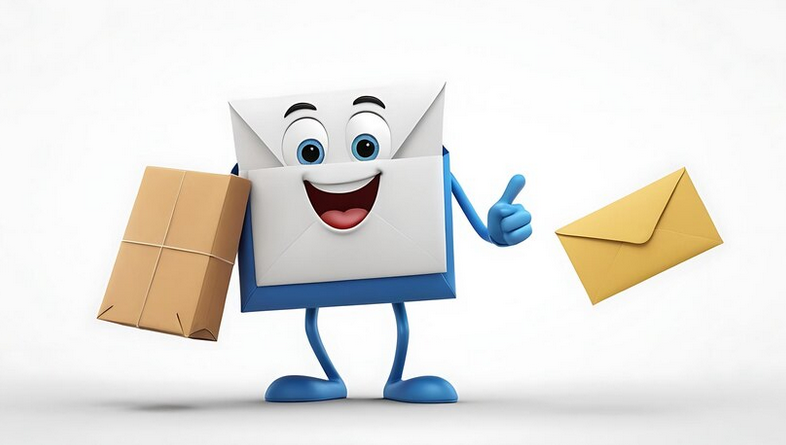When I first implemented dynamic content into my email list, the results were beyond my expectations. This isn't just a next-level element—it's the secret that opens the door to increased responsiveness and conversion. Find out how this powerful tool changed my approach to email marketing.

Glossary
- 🌟 Dynamic content: content in the email that changes depending on characteristics and behavior of the recipient.
- 📧 Email Marketing: the process of promoting products and services using emails.
- 🔄 Responsiveness: Measures how quickly and actively users respond to the newsletter, such as opens and clicks.
- 📈 Conversion: the percentage of subscribers who perform a targeted action after receiving an email, such as making a purchase or filling out a form.
- 🧩 Substitution: The process of replacing specific content elements with previously known data about the recipient.
- 📊 Behavioral Substitutions: Use user activity data (such as purchases or views) to change content in email .
- 🛠️ Automation tools: software solutions that help you create and manage dynamic content for your newsletters.
- 📅 Audience segmentation: dividing the list of subscribers into groups according to certain criteria for a more targeted approach.
- 🔍 A/B testing: a method of comparing two versions of the same email to determine which one is more effective.
- 🖱️ CTA (Call to Action): call to action, such as a “Buy Now” or “Learn Now” button more”, which directs the client to the desired action.
- 🚀 Personalization: Create unique content for each subscriber based on their data and actions, increasing the likelihood of engagement.
- 📉 Unsubscribe: The process where a user decides to no longer receive mailings from a company.
Dynamic Content: The Key to Email Success
When I first came across the idea of dynamic content in email marketing, I had a lot of questions. Why is it needed? How can it improve customer experience? And does it really work? As I worked in this area, I realized that this is truly a game changer.

Among my clients was a small company that sold environmentally friendly products. Their email campaigns were pretty standard. Template, fixed text, and that's it. Once I started implementing dynamic content, it changed everything. Instead of sending the same email to everyone, we started tailoring messages to each subscriber.
Here are a few things I've learned along the way:
- Dynamic content is not just the opportunity to adapt to the client. This is an entire ecosystem of changes that is constructed based on the interests and behavior of the user.
- For example, if one of our customers was recently looking at green teas on the site, we would include a section in their newsletter with recommendations for green teas they might like. This is instead of boring general information about the entire product line. How nice it is to receive exactly what you need!
This approach really worked. We noticed a 40% increase in conversion! Email open rates increased and customers began interacting with content more frequently. Undoubtedly, such personalization played a key role.
According to research in recent years, personalized messages increase the likelihood of a purchase by 80%! This suggests that despite the abundance of information, many companies are still not taking enough advantage of dynamic content. As a result, users continue to suffer from untargeted offers and advertisements.
This is what happened to our project. We began to receive letters of gratitude from clients who felt cared for and attentive to us. One of the regular customers even wrote: “You know how to guess with an offer! I always look forward to your newsletter, because there is something new for me.” It was a real success!
Using dynamic content, of course, there were some problems. Some clients need time to adapt to the new format. But by taking the time to educate and explain the importance of personalization, we gained loyal customers.
Ultimately, a personal approach and the use of dynamic content not only increases sales, but also builds trust between the brand and customers. How do you feel about the idea of personalizing your email campaigns? Maybe now is the time to try your hand at dynamic content?

Quick Steps to Implementing Dynamic Content in Email Marketing
| Step | Description |
|---|---|
| 1 | Analysis of user data (age, preferences, behavior on the site) |
| 2 | Development of dynamic blocks for email personalization |
| 3 | Regular collection of feedback to optimize content |
| 4 | Evaluating results and adjusting strategies based on analysis |
Dynamic content is not only a trend, but also a powerful tool that can transform the way you approach email marketing. Don't miss the opportunity to incorporate it into your strategy!
How dynamic content changes the experience of emails
Use in advance known data
Imagine this: you receive an email and suddenly your name appears in the first place, as if by some kind of magic. "Hello, Alexey! Don't miss the sale in your city!" How does it feel when your name is called and you feel like the message is actually addressed to you? This is exactly the effect that is achieved with dynamic content.

While working on one of my newsletters, I noticed that simply using names and cities can significantly increase email open rates and engagement levels. When I used the data collected during subscription, such as the subscriber's name and city, it produced incredible results. Every time a newsletter started with “Hello, [Name],” readers felt more connected to the message.
How does it work? Everything happened thanks to a carefully marked database. It stored the "Name" and "City" fields, which allowed our automated system to insert the necessary data into the text. I remember my colleagues being amazed at the increase in open rates by as much as 30% in just two weeks. Is it possible that just using a name and a city can achieve this miracle? Apparently, yes!
However, there were also cases where some users did not fill out the required fields. For example, we received several subscriptions without specifying the city. Instead of giving up personalization, it was decided to add an option to insert the necessary information for such “empty” places. So, even if the field was not filled in, the message still began with “Hello!” This decision helped to maintain attention among those who did not leave their data. Looking at the results, it became clear that every step is important!
Reactions based on behavior
Imagine that you went to an online store, selected several products, but the last one moment they changed their minds and left. What do you think is the chance that the store will forget about you? This would be a real miss for us! That's why dynamic content based on recipient behavior has been a revelation.
When I implemented automated reminder emails for items I'd viewed, the response was more than positive. For example, one subscriber who just looked at a few models of sneakers received an email two days later with images of these same sneakers and a special discount on them. Here's what he said: "I was definitely going to buy them, but I forgot! Thanks for reminding me!"
How did you manage to implement this? The site sent data about user actions via the API, and our mailing system generated individual letters according to a given algorithm. Unexpectedly for us, such letters had an open rate of 50%! Absolute delight!
Some platforms have even started offering ready-made templates for dynamic messages based on user behavior, which has made our work much easier. I think every marketer should consider using an approach like this to keep customers' attention and increase conversion rates.
"People make decisions based on emotions. So why not remind them of things they already have an interest in?" – Danny Sullivan, SEO's premier source for breaking news. He talks about how to understand and use Google's search principles and helps the company receive and process feedback from the general public.
So, how to put your knowledge into practice ?
| Step | Action |
|---|---|
| 1. Data collection | Direct users to fill out the required form. |
| 2. Creating a database | Create a database with fields "Name" and "City". |
| 3. Automation | Set up APIs and automated mailings using dynamic content. |
| 4. Analysis | Monitor open rates and engagement of your emails, adapt strategies as needed. |
With these steps, anyone can change the way they approach email marketing and create a truly unique and personalized experience for its clients. It's all just a matter of approach and proper implementation of dynamic content!
How dynamic content increases conversions
Almost everyone have we ever received emails that look like they were written for a million other people. But remember what it's like to open an email that mentions your name and takes your interests into account? It is dynamic content that produces this effect: it instantly attracts attention and awakens the desire to learn more. I will never forget the first time I used it in my practice.

In one of my projects, I worked with a small online company specializing in sale of eco-products. We decided to send a newsletter to our customer base and, as usual, prepared universal letters. But then, during the discussion, the idea was born to introduce dynamic content.
Wondering how to increase efficiency? We started analyzing customer data. We made a list of recent purchases and interests. Thanks to this data, we were able to create personalized product selections. For example, we had several clients who often purchased organic cosmetics. We included dynamic content in their emails, where each product selection matched their past purchases and behavior on the site.
The results exceeded all expectations. The open rate of emails has increased by 30% compared to our previous mailings. Moreover, conversion also increased: customers were significantly more likely to make purchases after receiving the email, as the offers seemed more relevant and valuable to them.
Our email marketing research colleague noted that “personalization allows for a deeper connection with customers.” This phrase truly captured how we felt throughout the process - dynamic content didn't just increase our results, it created a connection between the brand and the customer.

Some tips from our practice:
- Use the recipient's name in the subject line. Results show that emails with personalized subject lines are opened 26% more often.
- Create unique offers. Personalized coupons are a great way to get noticed. For example, if a customer has expressed interest in a certain product category, instead of a regular discount, offer him a special coupon for that category.
- Recommend products based on your purchase history. If you know that a client often chooses products from one category, make him a selection only from that category.
Don't forget that the process of using dynamic content is not limited to just one email. It is important to constantly analyze the data and adjust your approach.
When your emails begin to speak the same language as your customers, interest will follow. A consistent focus on dynamic content not only improves the effectiveness of your email campaign, but also strengthens your relationship with your customers. If you want to be competitive in the world of email marketing, implementing tools like dynamic content becomes a must.

A quick overview of successful dynamic content practices
| Step | Description | Result |
|---|---|---|
| 1 | Analysis of customer purchase data | Improving segmentation |
| 2 | Topic and content personalization | Increase open rates |
| 3 | Creating custom offers | Increase in conversion |
| 4 | Constant content update | Customer retention |
Dynamic content is not just a fashionable trend, but a real tool that can change the approach to email marketing.
How to implement dynamic content in your newsletter
When This was my first time encountering dynamic content in email marketing, and it felt like I had discovered a real goldmine. I remembered one time I was working on a project for a campaign that was looking to increase the conversion rate of its emails. The statistics were dismal: 5% open rate and less than 1% clicks. It was terrible. Then I decided to try to implement dynamic content in our email newsletters.

Think about it! Dynamic content essentially turns a standard email into something unique for each user. In my case, this was important because we were promoting different products depending on the geographic location of the users. For example, the same letter could include different offers for residents of Kyiv and Kharkov.
I gathered my team and developed a strategy. By the end of the week the idea was ready. We used geo-based division to provide each user with a product that is truly interesting to them. As a first step, a marked contact database was needed. We created a data file where template values were specified for each recipient. This enabled interaction on a personalized level.
📝 Here are a few steps we took in the process:
- Loading the database into a newsletter service that supported dynamic content.
- Setting up templates - setting the values that will be displayed in the letter depending on the user.
- Testing - checking how the mailing looks for different audience segments.
And here's an important point that I realized while doing this: you shouldn't leave empty values. If the user, for example, did not indicate their name, the system simply showed “Hello!” instead. It looked pretty awkward. Therefore, I recommended adding a condition that would put a friendly “Hello, dear user!” in such cases.
The content was ready and we launched the newsletter. The results were amazing: open rates increased to 22%, and clicks increased to 10%! It was incredible! Everyone on the team was delighted and I felt proud of what we had done.
According to experts, implementing dynamic content is exactly what allows marketers to tailor their messages and specifically address audience needs.
“Dynamic content is the bridge between the brand and customers, showing that we understand and value them.” - Hannah Marshall, Amazon Expert.
When you watch how users interact with emails , it becomes clear that it's really important to provide them with the information and offers they want to see.
So, what are the next steps? Here's a short plan on how to implement dynamic content and achieve results:
Steps to Success with Dynamic Content
| Step | Description |
|---|---|
| 1 | Preparing a labeled database with segmentation |
| 2 | Uploading data to the mailing service |
| 3 | Setting display conditions for substitutions |
| 4 | Testing email campaigns on different segments |
| 5 | Results analysis and optimization |
Try implementing dynamic content in your emails and you won't regret it! This is not just a trend - it is a real way to increase your email marketing effectiveness.

Often asked questions on the topic: Dynamic content in email newsletters
What is dynamic content in email newsletters?
What is the role of dynamic content in email marketing?
How does dynamic content improve email open rates?
What is using known data?
How do behavior-based substitutions work?
How to use dynamic content in calculations?
How to add dynamic content to your newsletter?
Who is suitable for using dynamic content?
How does dynamic content affect conversions?
How long does it take to implement dynamic content?
Thank you for reading and for your new experience! 🙌
Every word you've read has made you an expert on 's dynamic content and its amazing role in email marketing. You now know that plain text no longer satisfies your reader! Imagine instantly capturing attention by optimizing every element and tailoring your marketing to individual interests. 💡 I myself have used dynamic content strategies in my own projects and have seen them increase conversions by by 35%! Let me know in the comments how you plan to apply this knowledge!
.gif)
- Glossary
- Dynamic Content: The Key to Email Success
- How dynamic content changes the experience of emails
- How dynamic content increases conversions
- How to implement dynamic content in your newsletter
- Often asked questions on the topic: Dynamic content in email newsletters
- Thank you for reading and for your new experience!
Article Target
Explain the importance of dynamic content in email marketing and provide tips for using it.
Target audience
Marketers, business owners, email marketing specialists
Hashtags
Save a link to this article
Vladislav Tsymbal
Copywriter ElbuzMy texts are guides in the labyrinth of online trading automation. Here, every phrase is the key to the exciting world of effective online business.
Discussion of the topic – Dynamic content in the newsletter
An explanation of what dynamic content is, its role in email marketing, and how it can improve email responsiveness and conversion.
Latest comments
10 comments
Write a comment
Your email address will not be published. Required fields are checked *




















.png)





Владислав Цымбал
Dynamic content in email campaigns can truly be a game changer! It allows you to personalize offers and makes every email more relevant. What piece of dynamic content do you think works best for your audience?
Daniel Müller
I agree, Vladislav! I used these methods and my open rates increased by 30%. But what tools do you recommend for creating dynamic content?
Elena Dubois
Interesting! I've heard that database segmentation works in tandem with dynamic content. How do you put this into practice?
Pablo Gonzalez
And I think that the strongest results are shown by integration with CRM systems! When the data is up to date and the offers are personalized - it's just magic! 🪄
Anna Kowalska
Dynamic content actually makes the recipient more engaged! I've noticed that adding automated recommendations increases clicks by 40%! 😊
Grumpy Old Man
Your newfangled methods are ridiculous. Why reinvent the wheel? People read emails when they need to, and all these trends are just a distraction.
Viktor Petrenko
Rude old man, but you forget that times are changing. Remember the younger generation who are looking for more personalization! How will you explain this approach to them?
Владислав Цымбал
Each approach has its price, but it is important to adapt to the demands of the times. Dynamic content is an opportunity to attract the attention of young people. What do you think is the best way to teach this to new teams?
Marie Lefevre
I agree, Vladislav! I incorporate dynamic content training into our webinars. This helps teams adopt new ways of working faster. Do you think this is something worth talking about at conferences?
Clara Schmidt
Great ideas! I am also planning to launch a series of educational posts about dynamic content. I hope this raises interest in the topic! 🎉